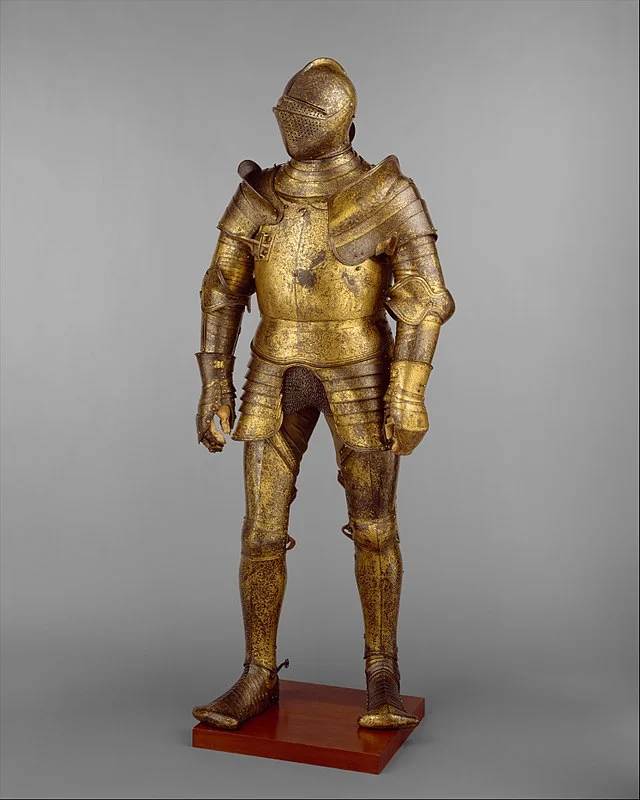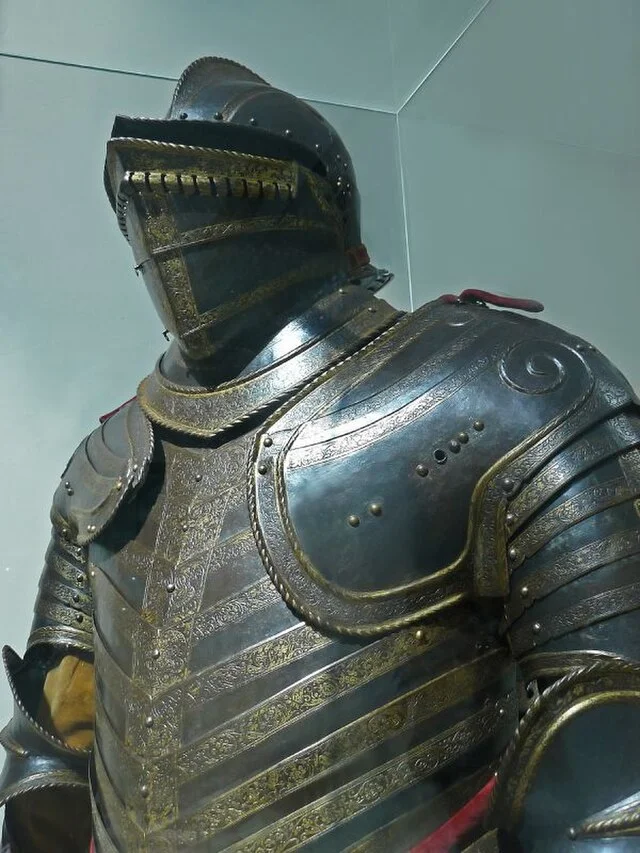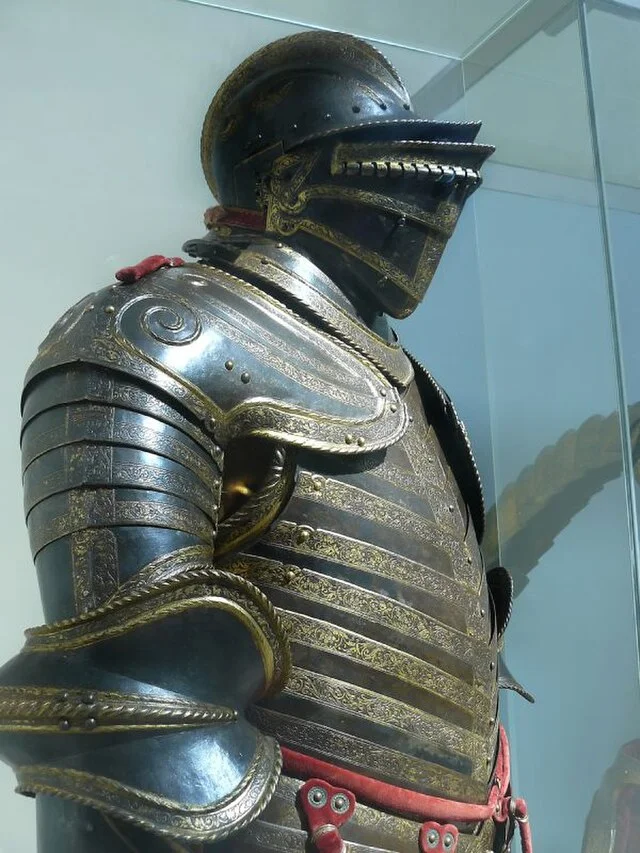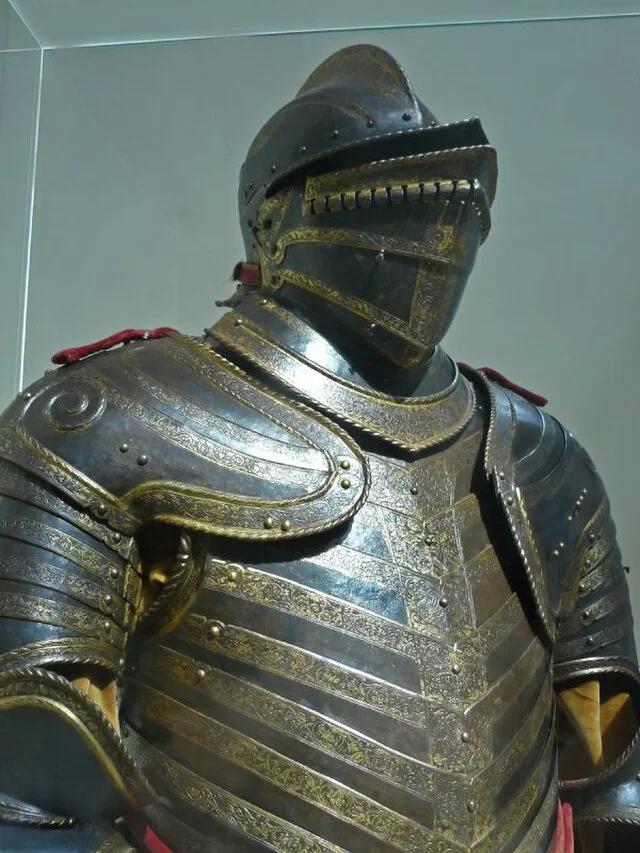The steel armor of King Henry VIII is a remarkable artifact that symbolizes the power and prestige of one of England’s most famous monarchs. Crafted in the 16th century, this armor was not only a protective garment for the king but also a statement of wealth and technological advancement. It reflects the artistry and skill of the period’s armorers and stands as a testament to the personal tastes and physical changes of King Henry VIII throughout his reign.
Get your dose of History via Email
The Discovery of the Steel Armor of King Henry VIII

The steel armor of King Henry VIII was not discovered in the traditional sense, as it was never lost. Instead, it has been preserved through the centuries. The armor is part of the Royal Armouries collection, housed in the Tower of London. Historians and curators have meticulously maintained the armor, ensuring its survival for future generations to study and admire.
The Royal Armouries, as an institution, has existed in various forms since the Middle Ages. It became a public museum in the 17th century, making it one of the oldest museums in the United Kingdom. The armor of King Henry VIII has been a centerpiece of this collection for centuries, attracting scholars and the public alike.
King Henry VIII’s armor was likely made by the Royal Workshops at Greenwich, which were established by Henry VIII himself. The workshops were renowned for their high-quality craftsmanship. The armorers who worked there were some of the best in Europe, and their work was highly sought after by the nobility.
Throughout the years, the armor has been displayed in various exhibitions and has undergone conservation efforts to preserve its condition. These efforts ensure that the armor remains a key piece of Tudor history and a prime example of Renaissance armor-making techniques.
Today, the armor is not only an object of historical interest but also a cultural icon. It has been featured in numerous documentaries, books, and other media, helping to bring the story of King Henry VIII and his era to life for a modern audience.
About the Steel Armor of King Henry VIII

The steel armor of King Henry VIII was designed for both combat and ceremonial use. It showcases the elaborate decoration and craftsmanship typical of Tudor England. The armor includes several pieces, such as a helmet, breastplate, backplate, gauntlets, and leg armor, all intricately fashioned to provide both protection and mobility.
King Henry VIII took a personal interest in the design and production of his armor. He was known for his love of chivalry and tournaments, and his armor reflects the grandeur he sought to project. The armor is adorned with etchings, gilding, and even Tudor roses, emphasizing the king’s royal status and the symbolism of his reign.
The armor also tells a personal story of the king’s life. Over time, as Henry VIII’s physique changed, so too did the dimensions of his armor. The expanding girth of the later armor pieces is a clear indication of his physical decline, which contrasts with the athletic young king he once was.
Additionally, the armor was not just for show: it was functional and would have been used in jousting tournaments. These events were not only a display of knightly prowess but also an opportunity for the king to demonstrate his dominance and control over the nobility.
The preservation of King Henry VIII’s armor allows historians to study the technological advancements in armor-making during the Tudor period. It provides insight into the materials and techniques used, as well as the cultural importance of armor in 16th-century England.
Key Facts and Figures of the Steel Armor of King Henry VIII

The steel armor of King Henry VIII is a product of the advanced metallurgical and artistic techniques of the 16th century. The armor was made using high-quality steel, which provided both strength and flexibility. This was essential for a king who participated in tournaments and potentially in battle.
The weight of the armor varied depending on the specific pieces and their intended use. Tournament armor was often heavier to provide extra protection, while battle armor was lighter to allow for greater mobility. The exact weight of King Henry VIII’s armor is not documented, but similar armors from the period could weigh anywhere from 20 to 100 pounds.
The size of the armor pieces also varied throughout King Henry VIII’s life. Early in his reign, the armor was made to fit a man with a muscular and athletic build. Later, as the king’s health declined and he gained weight, the armor was adjusted to accommodate his larger size.
The armor’s decoration is another key aspect. It features intricate designs, including embossed and gilded elements. These decorations were not only aesthetically pleasing but also served to demonstrate the wealth and power of the English monarchy.
Finally, the armor’s survival is a testament to the skill of the conservators and historians who have cared for it over the centuries. Their efforts have ensured that this important piece of history remains in excellent condition, allowing it to be studied and appreciated by future generations.
At a glance
- Country Discovered: England
- Civilization: Tudor
- Age: 16th century AD
Source:

